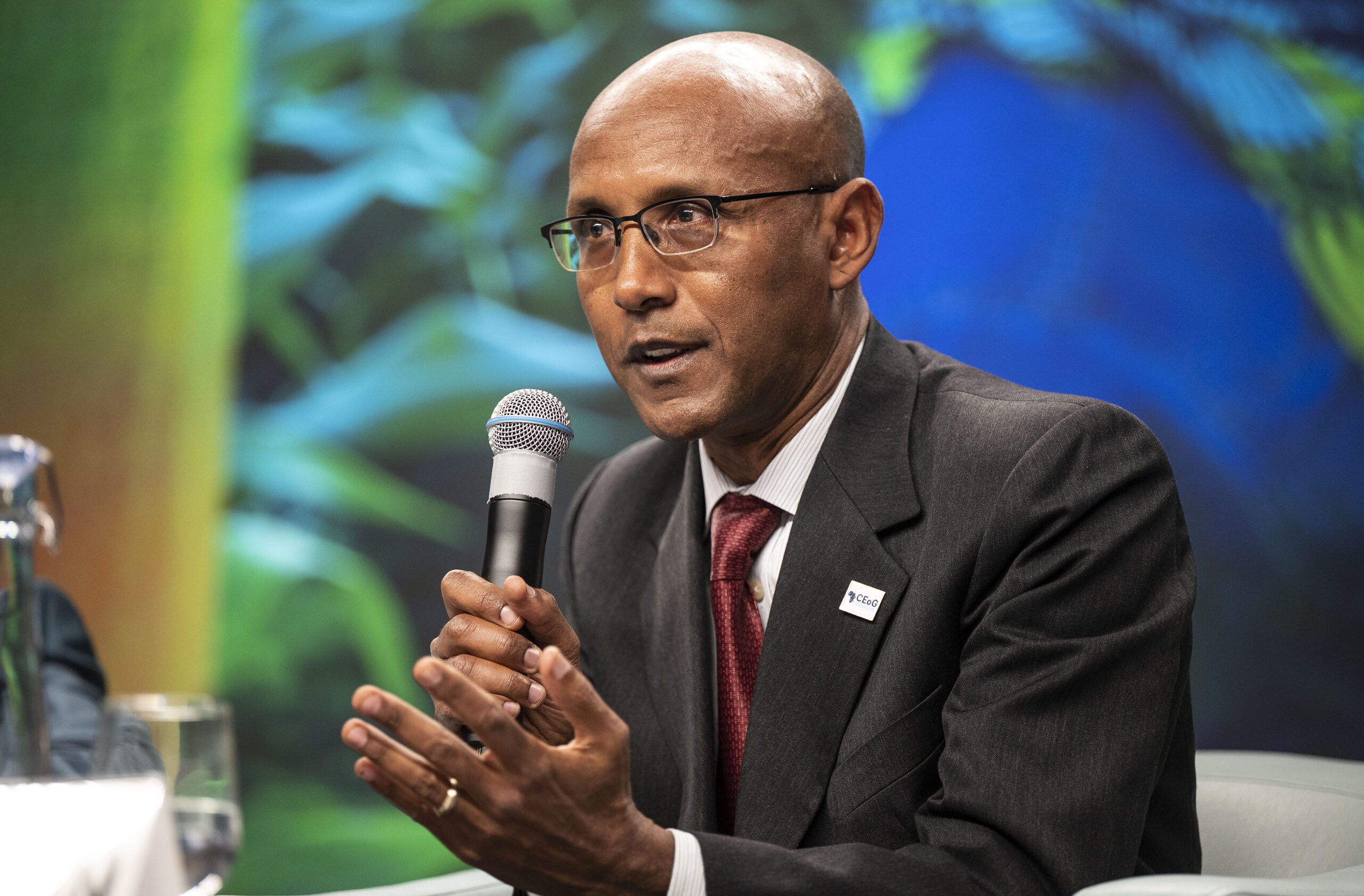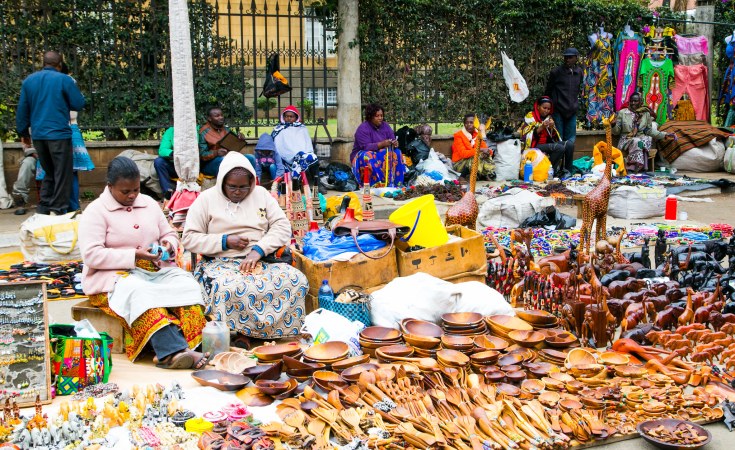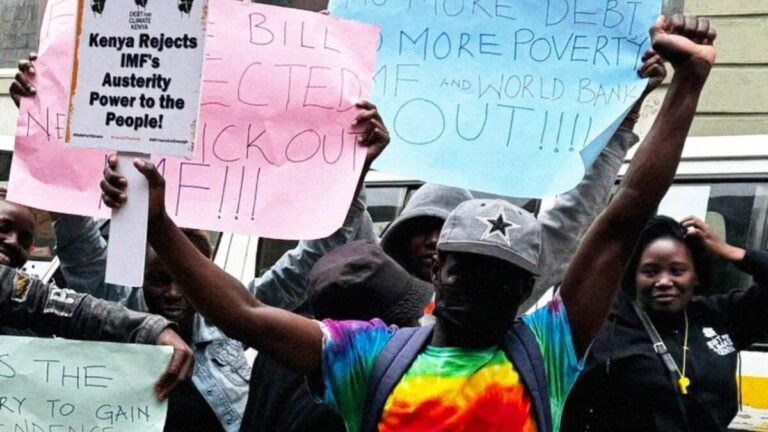
Andrew Dabalen, World Bank Chief Economist for Africa, says growth recovery remains fragile despite improved outlooks. Photo/Courtesy
By Daisy Okiring
NAIROBI, Kenya- The World Bank has raised its growth forecast for Sub-Saharan Africa to 3.8% in 2025, up from 3.5%, citing falling inflation, stabilizing currencies, and renewed investor confidence in major economies such as Ethiopia, Nigeria, and Côte d’Ivoire.
According to the latest Africa’s Pulse report, the region is showing signs of recovery after a decade of economic shocks that included the COVID-19 pandemic, global supply chain disruptions, and soaring debt levels. The Bank projects further acceleration, with growth expected to average 4.4% between 2026 and 2027.
Inflation and currency stability boost confidence
Median consumer price inflation in the region has dropped from 9.3% in 2022 to 4.5% in 2024, with a further decline to about 4% projected for 2025–2026. This easing inflation, combined with the recent stabilization of local currencies, has boosted purchasing power and strengthened private sector investment.
“Most of the currencies that had sharply depreciated against the U.S. dollar have now recovered and stabilized,” said Andrew Dabalen, the World Bank’s Chief Economist for Africa. He added that the U.S. dollar’s decline—down nearly 10% since early 2025—has also supported emerging markets and commodity exporters across the continent.
CBE transition at risk as teacher shortages threaten reforms: World Bank raises Sub-Saharan Africa growth forecast to 3.8% for 2025The World Bank upgraded forecasts for several economies, including Ethiopia, Nigeria, and Côte d’Ivoire, attributing their stronger performance to rising real incomes, improved business environments, and renewed capital inflows. However, Dabalen cautioned that “the rebound remains fragile,” warning that high debt levels and slow productivity growth continue to hinder progress.

Youth jobs and informal sector challenges
Despite improved outlooks, the Bank underscored that job creation remains Africa’s biggest challenge. With nearly three-quarters of the region’s workforce employed in the informal sector, most jobs are low-paying and offer limited security.
“These jobs have to be jobs that provide a living wage and secure lives,” Dabalen said, emphasizing that youth unemployment and underemployment have already contributed to unrest in countries such as Nigeria, Kenya, and Madagascar.
He cautioned that without inclusive growth, “the consequences of not solving these problems are hard to contemplate—they will be very disruptive, and we’re beginning to see the signs of it.”
The World Bank urged governments to invest in small and medium-sized enterprises (SMEs)—a critical driver of employment and innovation in the region. Long-term stability, the report noted, depends on diversifying economies away from commodity dependence and building a competitive private sector.
Has President Ruto truly transformed Kenya’s agriculture three years on?: World Bank raises Sub-Saharan Africa growth forecast to 3.8% for 2025Debt and trade uncertainties remain risks
While many African central banks have relaxed monetary policy due to falling inflation, high public debt and interest payments continue to strain national budgets. The Bank warned that these costs are diverting resources away from essential public services such as health, education, and infrastructure.
It also highlighted growing uncertainty over the future of the U.S.-Africa trade agreement (AGOA) and the region’s vulnerability to climate shocks, which threaten agriculture-dependent economies.

Call for a new growth model
The World Bank called for a shift toward a new growth model anchored on medium and large enterprises, which it says are essential for boosting productivity and creating formal, high-quality jobs. Currently, only 24% of employment in Sub-Saharan Africa consists of wage-paying jobs outside Southern Africa.
“The region needs more organized and efficient production systems that can unlock economies of scale and create specialized, higher-quality employment,” the report said.
To achieve this, the Bank recommends scaling up investments in infrastructure, digital connectivity, transport networks, vocational training, and simplified business regulations. It also emphasized the role of public works programs and green initiatives, such as Ethiopia’s Green Legacy, the Great Green Wall in the Sahel, and Malawi’s Climate Smart Enhanced Public Works Programme, which combine job creation with environmental sustainability.
Why irrigation is Kenya’s lifeline for climate resilience and growth: World Bank raises Sub-Saharan Africa growth forecast to 3.8% for 2025The path ahead
Dabalen stressed that while growth prospects are improving, structural reforms must continue to ensure the recovery is inclusive and sustainable. “The current growth trajectory alone will not generate sufficient jobs,” he said. “A combination of structural reforms and targeted employment programs is essential to support Africa’s young and expanding workforce.”
As Sub-Saharan Africa edges toward recovery, the message from the World Bank is clear: the region’s future depends not just on growth—but on growth that creates jobs, builds resilience, and empowers its people.



